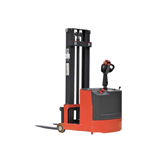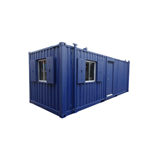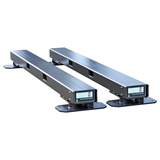Find the best container reach stackers in Australia. Learn about costs, brands, maintenance, and financing options in this comprehensive guide.
Key Takeaways
- Price Range: Expect to pay between $100,000 and $500,000 for a new container reach stacker, depending on the model and brand. Used machines are available from $80,000.
- Types of Machines: The two main types are empty container handlers (for lighter loads) and loaded container handlers (for heavier loads). Prices for these models can vary significantly.
- Operational Considerations: Key factors for consideration include lifting height, load capacity, and fuel type (diesel is most common in Australia).
- Maintenance: Regular servicing (every 500 hours) and replacing key components such as hydraulic pumps and brake pads are critical to keep operations running smoothly.
- Financing: Financing options are available, including lease agreements, hire purchase, and bank loans, which typically require a down payment of 10-20%.
- Compliance and Certification: Reach stackers must comply with Australian Work Health and Safety (WHS) standards and other relevant industry regulations, such as AS 2359.1.
Introduction
A container reach stacker is a vital piece of equipment for businesses involved in container handling, such as logistics, warehousing, and transport operations. These machines are designed to lift and stack containers with ease, making them indispensable in ports, terminals, and large warehouses. Whether you’re looking to purchase new or used, understanding pricing, types, operations, maintenance needs, financing options, and compliance regulations is crucial to making an informed decision. This guide will help you navigate all these factors to ensure you choose the right container reach stacker for your business.
Types of Container Reach Stackers
1. Empty Container Handlers
- Purpose: Designed to handle lighter, empty containers.
- Load Capacity: Typically handles containers up to 45 tonnes.
- Lifting Height: Can lift containers up to 5–6 metres high.
- Price Range: Generally priced between $200,000 to $400,000 for a new model.
2. Loaded Container Handlers
- Purpose: Built for handling full containers, these reach stackers have much higher load capacities.
- Load Capacity: Can handle containers up to 50-60 tonnes.
- Lifting Height: Typically lifts up to 4–5 metres.
- Price Range: Typically priced between $400,000 to $600,000 for a new model.
Container Reach Stacker Prices in Australia
When purchasing a container reach stacker, prices can vary greatly based on several factors, including machine type, brand, model year, and condition (new vs. used). Here's a breakdown:
- New Container Reach Stackers: Prices typically range between $100,000 and $500,000, depending on size, lifting capacity, and the brand.
- Used Container Reach Stackers: Prices start from around $80,000 for a well-maintained used machine. However, used equipment may require more frequent maintenance.
- Leasing: Monthly leasing options are available, with rates ranging from $5,000 to $20,000 depending on the size and terms.
Factors Affecting Price:
- Brand and Model: Premium brands tend to command higher prices.
- Condition: New models will be priced significantly higher than used units, but with fewer maintenance concerns.
- Load Capacity and Features: Machines with higher lifting capacities, longer reach, or additional features (e.g., remote operation) will cost more.
Key Operational Considerations
When purchasing a container reach stacker, it’s essential to consider the following operational factors:
- Load Capacity: Always choose a machine that meets or exceeds the maximum weight your business needs to lift. Underestimating your load capacity could result in machine failure.
- Lifting Height: Ensure the reach stacker can lift containers high enough for your storage requirements. Most models offer lifting heights between 4 to 6 metres.
- Fuel Type: Most container reach stackers use diesel due to its power efficiency and cost-effectiveness in industrial settings. Ensure the fuel type aligns with your operation's needs.
- Transmission: Automatic and manual transmissions are available. Automatic transmissions tend to offer easier handling but can come at a higher cost.
- Maneuverability: Depending on your workspace, you may need a model that is more agile for tight spaces. Choose a machine with hydraulic drive and articulated steering if you need precision in confined environments.
Maintenance and Parts
Regular maintenance is key to ensuring the longevity and performance of your container reach stacker. Here's what to expect:
Maintenance Schedule:
- Routine Checks: Conduct basic checks every 50 hours, including fluid levels and tyre condition.
- Every 500 Hours: A thorough inspection and servicing, including checking hydraulic systems, brake pads, and lifting mechanisms.
- Every 1,000 Hours: Replace key components, such as hydraulic pumps, brake pads, and filters.
Common Parts to Replace:
- Hydraulic Pumps: These are crucial for the machine’s lifting mechanism and need to be replaced every 2,000–3,000 hours.
- Tyres: The tyres wear out due to the weight and constant movement, typically requiring replacement every 1,500–2,000 hours.
- Brake Pads: Brake pads should be checked and replaced regularly to prevent accidents.
Financing Your Container Reach Stacker
If you’re looking to finance your container reach stacker, there are several options available:
1. Lease Agreements
- Ideal for businesses that prefer to lease equipment for short-term use.
- Monthly payments are typically lower than loans, but the business does not own the machine at the end of the lease term.
2. Hire Purchase
- Allows businesses to gradually purchase a reach stacker over time.
- Once all payments are made, ownership of the machine is transferred.
3. Bank Loans
- Traditional loans with interest rates between 5% and 10% per annum.
- A down payment of 10-20% is typically required.
4. Government Incentives
- Businesses may be eligible for Instant Asset Write-Off under Australian tax law if the reach stacker costs less than $150,000. This provides an immediate tax benefit.
Compliance and Certification Considerations
In Australia, container reach stackers must meet certain compliance and safety standards to operate legally and safely:
- Work Health and Safety (WHS): Compliance with WHS regulations is essential for ensuring workplace safety. This includes training, regular safety inspections, and ensuring that all operators are certified.
- Australian Standard AS 2359.1: This standard sets the performance and safety requirements for powered industrial trucks, including reach stackers. Ensure the machine is compliant before purchase.
- Environmental Compliance: Some regions may have specific emissions requirements for diesel-powered machines. Ensure your equipment complies with local environmental laws.
Training and licensing requirements in Australia
To legally operate a container reach stacker in Australia, specific training and licences are required under WHS laws.
Mandatory requirements:
- High Risk Work Licence (HRWL) – Class RS (Reach Stacker) licence issued by WorkSafe
- VOC (Verification of Competency) – Especially required on commercial ports and mining sites
- Accredited training provider – Must be a registered RTO (Registered Training Organisation)
Logistics and delivery considerations
Buying a reach stacker is only part of the puzzle — transport and delivery logistics must also be factored in:
- Transport costs:
- Intra-state delivery: $1,500–$3,000
- Interstate (e.g., Melbourne to Perth): $5,000–$9,000
- Site access:
- Ensure hardstand or concrete pad access for safe unloading
- Allow turning space of at least 10–12 metres radius
- Lead times:
- Local stock: 2–4 weeks delivery
- Imported or custom orders: up to 10–14 weeks depending on port schedules
Common Questions Container Reach Stacker Buyers Have
1. How long does a container reach stacker last?
- A well-maintained container reach stacker can last up to 10–15 years. The lifespan depends on usage, maintenance, and operational conditions.
2. Can I buy a used container reach stacker?
- Yes, purchasing a used reach stacker can be a cost-effective option. Ensure you conduct a thorough inspection or hire a professional to assess the machine’s condition before purchase.
3. What fuel options are available?
- Most reach stackers run on diesel, but there are also some models with electric and hybrid options, especially for indoor operations or environmentally-conscious businesses.
4. Are there warranties available?
- Yes, new container reach stackers typically come with a 2–5 year warranty, covering major components like the engine and hydraulic systems. Used machines may have limited or no warranty.
Conclusion
Purchasing a container reach stacker is a significant investment, and it's essential to make an informed decision. By considering factors like machine type, price, operational needs, and financing options, you can find a solution that aligns with your business goals. Always ensure that the machine complies with Australian safety and environmental standards, and don’t forget to factor in ongoing maintenance costs. With the right planning, your new container reach stacker will provide years of reliable service for your operations.










-160x160-state_article-rel-cat.png)





